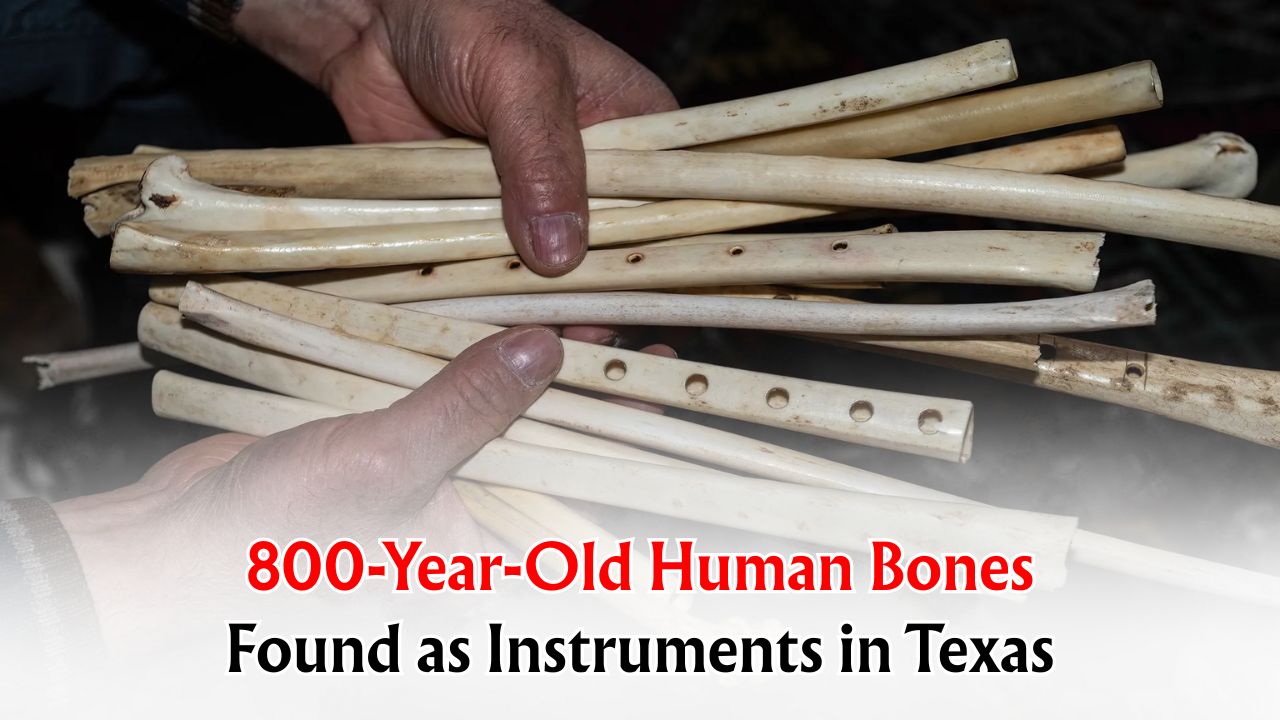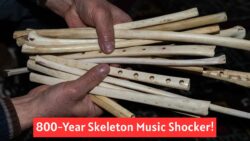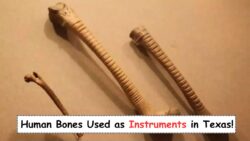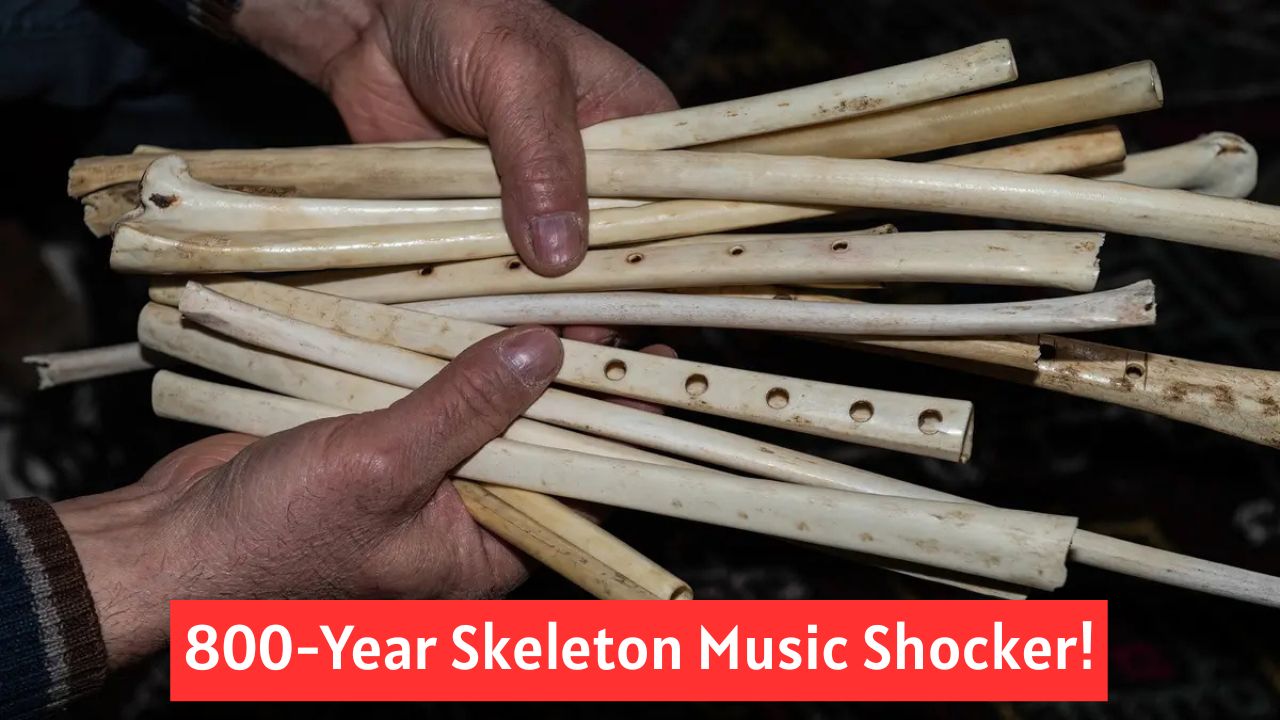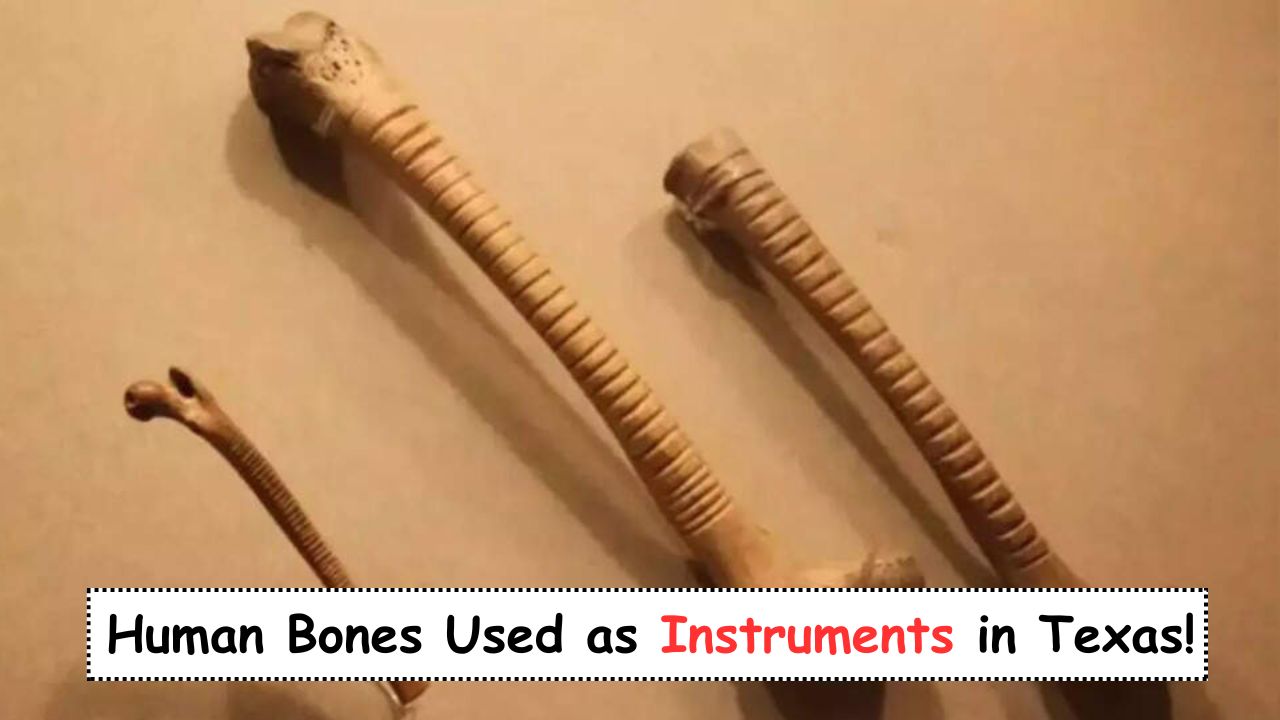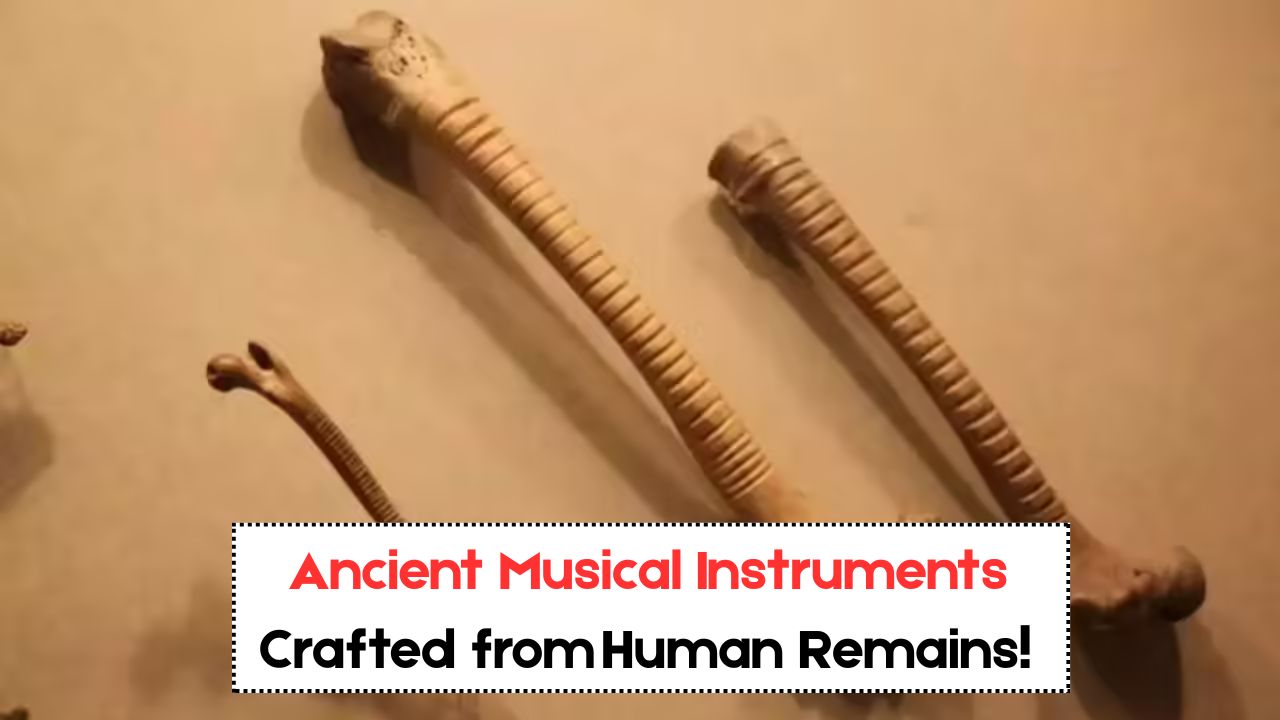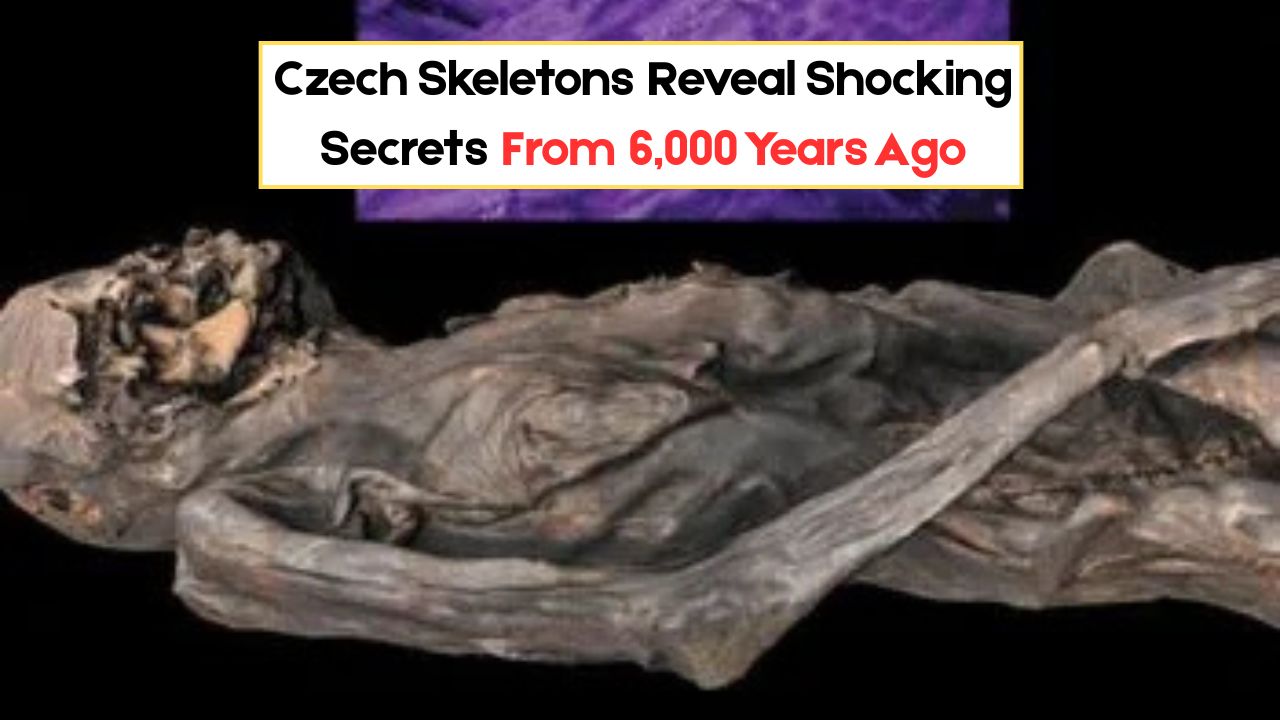Human Bone Instruments -The recent discovery of 800-year-old human bones fashioned into musical instruments in South Texas has captivated archaeologists and history enthusiasts worldwide. These bone flutes and whistles, believed to have been used in ancient Aztec rituals, open a mysterious chapter about cultural practices that blend music, spirituality, and the afterlife. The find not only challenges our understanding of pre-Columbian life in North America but also deepens the intrigue around Aztec influence in regions far beyond central Mexico.
This remarkable discovery was made by a team of researchers excavating a previously unexplored burial site near the Rio Grande. What started as a routine archaeological investigation soon turned extraordinary, as several carefully carved bones were found alongside traditional burial artifacts. Carbon dating revealed these artifacts dated back to the 13th century, aligning them with known periods of Aztec expansion and ritual complexity. Experts now believe these instruments were used in ceremonies to honor the dead or communicate with deities, offering new perspectives on the interconnectedness of music, ritual, and mortality in ancient societies.
The significance of this find extends beyond its immediate archaeological value. It raises questions about ancient migration, cultural exchange, and the role of music in spiritual life. The bones, believed to be of adults and young individuals, show intricate carvings and design patterns associated with Aztec symbolism. Their presence in South Texas, hundreds of miles from the Aztec heartland, hints at a much wider sphere of influence and interaction among ancient communities of North America.
Discovery at the Rio Grande: Unearthing the Past
The discovery site in South Texas has quickly become a focal point for researchers eager to unlock secrets hidden for centuries. Early reports from the excavation detail the complexity and richness of the burial ground.
- The site contained at least 14 skeletons, with several bones deliberately separated from the remains.
- Archaeologists identified flute-like holes and carvings on long bones such as femurs and humeri.
- Initial analysis indicated that the bones were processed using stone tools, preserving ancient craftsmanship.
- Ceramic fragments and traditional Aztec ornaments were found alongside the musical instruments.
- Soil samples suggest ritual fires may have been part of the ceremonies performed here.
- The burial site’s layout mirrors known Aztec ritual spaces found in central Mexico.
- Animal bones and seeds found nearby point to feasting and sacrificial offerings as part of the ritual.
- The discovery has attracted global attention, with institutions expressing interest in further study.
Significance of the Musical Instruments
The transformation of human bones into musical instruments is both shocking and deeply symbolic. Understanding the purpose behind this practice sheds light on ancient beliefs.
- Bone flutes and whistles played a role in connecting with spirits and gods.
- Music was believed to guide the dead through the afterlife, ensuring a safe journey.
- The choice of human bones, rather than animal, suggests a highly ritualized, sacred process.
- Instruments were often played during funerals, sacrifices, and major seasonal festivals.
- Sound created by these instruments was thought to carry spiritual messages.
- The craftsmanship indicates specialized knowledge passed through generations.
- Carved motifs on the bones match those found in Aztec codices and temples.
- Such practices were likely reserved for priests, shamans, or high-status individuals.
Ancient Rituals and Beliefs: The Aztec Influence Beyond Mexico
The presence of Aztec-style ritual objects so far north raises questions about migration and cultural exchange in ancient North America. Researchers are now reevaluating the reach and impact of the Aztec civilization.
- Evidence suggests trade routes extended from Central Mexico to the American Southwest.
- Similar musical instruments have been found in Mesoamerican temples, strengthening the connection.
- DNA analysis of the remains is underway to trace possible links to Aztec or related populations.
- Local indigenous groups may have adopted or adapted Aztec practices.
- The combination of burial methods and musical rituals is unique for the region.
- Spanish conquistadors recorded stories of such practices during early encounters.
- Artifacts found at the site show a mix of local and Aztec design elements.
- Linguistic studies point to shared religious vocabulary across distant communities.
Table: Key Aztec Ritual Practices Identified at the Site
| Ritual Element | Description | Evidence Found | Similarity to Aztec Customs | Possible Purpose | Artifact Type | Estimated Age | Associated Deities |
|---|---|---|---|---|---|---|---|
| Bone Instruments | Flutes, whistles carved from human bones | Yes | High | Spiritual communication, funerals | Human bones | 800 years | Mictlantecuhtli |
| Fire Pits | Charred earth, burnt offerings | Yes | Moderate | Sacrificial or purification rituals | Ash, charcoal | 800 years | Xipe Totec |
| Ornamental Pottery | Decorative ceramics with Aztec motifs | Yes | High | Offering containers, ceremonial use | Pottery shards | 800 years | Coatlicue |
| Stone Tools | Tools for carving and ritual use | Yes | Moderate | Preparation of bones, symbolic actions | Stone blades | 800 years | Huitzilopochtli |
| Burial Mounds | Organized group burials | Yes | Moderate | Community ancestor worship | Earth mounds | 800 years | Various |
| Seed and Animal Remains | Seeds, animal bones found with humans | Yes | High | Feasting, fertility rituals | Seeds, bones | 800 years | Centeotl |
| Symbolic Carvings | Aztec symbols on bone and pottery | Yes | High | Ritual identification, status marking | Carved bones | 800 years | Quetzalcoatl |
| Textile Fragments | Remains of woven cloth, rare in dry soil | Limited | Moderate | Shrouds, ceremonial attire | Fiber fragments | 800 years | Tlaloc |
Interpreting the Symbols: Artistic Patterns and Their Meanings
Many of the bones and pottery pieces feature intricate carvings and designs. Decoding these symbols helps reveal the mindset of those who created and used these sacred objects.
- Repeated use of spiral and feather motifs suggest themes of rebirth and ascension.
- Sun and moon shapes point to rituals tied to the agricultural calendar.
- Animal figures carved on bones indicate totemic beliefs and spirit guides.
- Geometric patterns match those in Aztec codices, possibly representing prayers or chants.
- Red and black pigment traces on pottery align with Aztec color symbolism for life and death.
- The arrangement of symbols may map ritual journeys or spiritual pathways.
- Musical notes etched on some pieces hint at specific ceremonial melodies.
- Bilingual symbols in both Nahuatl and local dialects suggest multicultural interaction.
Table: Symbolic Motifs and Their Interpretations
| Symbolic Motif | Appearance | Common Meaning | Aztec Context | Evidence at Site | Ritual Use | Associated Color | Related Deity |
|---|---|---|---|---|---|---|---|
| Spiral | Carved on bone flutes | Rebirth, cycles | Used in funeral art | Multiple bones | Guiding souls | Red/black | Quetzalcoatl |
| Feather | Pottery, bone handles | Ascension, communication | Found in priest attire | Pottery, bones | Connection to gods | Blue | Huitzilopochtli |
| Sun/Moon | Pottery rims, bone carvings | Day/night cycles | Major theme in Aztec myth | Pottery, bones | Calendar rituals | Yellow/white | Tonatiuh, Metztli |
| Animal Figure | Bone ends, pottery | Spirit guides, protection | Frequent in totems | Pottery, bones | Totem rituals | Various | Tezcatlipoca |
| Geometric Pattern | All artifacts | Order, cosmic balance | In temple murals | Bones, pottery | Ritual alignment | Black/red | Ometeotl |
| Bilingual Inscript. | Bone, pottery | Multicultural exchange | Rare, suggests migration | Pottery, bones | Ceremonial record-keeping | Various | – |
| Musical Notes | Bone flutes | Ritual melody | No direct precedent | Some bone flutes | Structured ceremony music | – | – |
| Color Pigment | Pottery surfaces, carvings | Life/death symbolism | Common in ritual objects | Pottery, bones | Decoration, identity | Red/black | Various |
Unanswered Questions: Migration, Trade, and Cultural Exchange
As the research continues, archaeologists face new mysteries regarding how and why Aztec ritual practices found their way to South Texas. The complexity of the site suggests more than simple trade; it hints at possible migration or even colonization.
- Did Aztec priests or artisans travel north to establish ceremonial centers?
- Could local tribes have invited Aztec spiritual leaders for joint rituals?
- What role did trade in obsidian, jade, or cacao play in connecting these cultures?
- Is there evidence of language or art exchange beyond the burial site?
- How did these practices survive or adapt over centuries of colonization?
- Are similar sites hidden elsewhere in Texas or the American Southwest?
- What does this mean for the broader narrative of pre-Columbian North America?
- Ongoing excavations promise more answers as teams continue their investigation.
Migration and Trade: Possible Scenarios
- Direct migration by Aztec priests seeking new followers or escaping conflict.
- Cultural diffusion via established trade routes between Mexico and Texas.
- Intermarriage and alliance between Aztec and local elite families.
- Syncretism, where indigenous practices merged with imported Aztec customs.
- Religious pilgrimage routes that spread ritual knowledge.
- Forced relocation after Spanish incursions in Mexico.
- Economic alliances based on resource sharing.
- Ritual tourism, with people traveling to participate in major ceremonies.
Departmental Contact Details for Further Information
For readers and researchers interested in learning more about the ongoing excavation, or for those seeking educational or media resources, here are the primary contact details:
| Department/Organization | Contact Person | Email Address | Phone Number | Address |
|---|---|---|---|---|
| Texas Archeological Research Center | Dr. Maria Alvarez | malvarez@txarc.org | +1-512-555-0131 | 1234 Research Way, Austin, TX 78712 |
| University of Texas – Anthropology Dept. | Prof. John Stewart | jstewart@utexas.edu | +1-512-555-0172 | 2201 Speedway, Austin, TX 78712 |
| San Antonio Historical Society | Linda Gomez | info@sahistorysoc.org | +1-210-555-0188 | 300 Alamo Plaza, San Antonio, TX 78205 |
| Museum of the Southwest | Rachel Jenkins | rjenkins@museumofsouthwest.org | +1-432-555-0211 | 1705 W Missouri Ave, Midland, TX 79701 |
| Texas Commission on the Arts | Mark Ellis | mellis@arts.state.tx.us | +1-512-555-0199 | 201 E 14th St, Austin, TX 78701 |
| Aztec Heritage Foundation | Carla Martinez | cmartinez@aztecheritage.org | +1-512-555-0255 | 9025 Culture Rd, Austin, TX 78744 |
| National Park Service – South Texas Unit | Greg Parker | greg.parker@nps.gov | +1-956-555-0233 | 600 E Port Ave, Brownsville, TX 78520 |
| Smithsonian Institution | Dr. Paul Anderson | panderson@si.edu | +1-202-555-0321 | 1000 Constitution Ave NW, Washington, DC |
Frequently Asked Questions
Q1: What exactly was discovered in South Texas?
A: Archaeologists found human bones carved into musical instruments, along with Aztec-style artifacts and burial objects dating back 800 years.
Q2: Were these instruments definitely used by the Aztecs?
A: While direct Aztec origin can’t be absolutely confirmed, the style, motifs, and ritual context closely match known Aztec practices.
Q3: Why were human bones used instead of animal bones?
A: Using human bones for instruments was a deeply sacred act, believed to enhance communication with spirits and honor the deceased.
Q4: What do these findings mean for North American history?
A: They suggest far more cultural exchange and migration between Mesoamerica and North America than previously thought.
Q5: Can the public visit or view these artifacts?
A: Many items are being studied, but some may be displayed in local museums. Contact the Texas Archeological Research Center for the latest updates.
